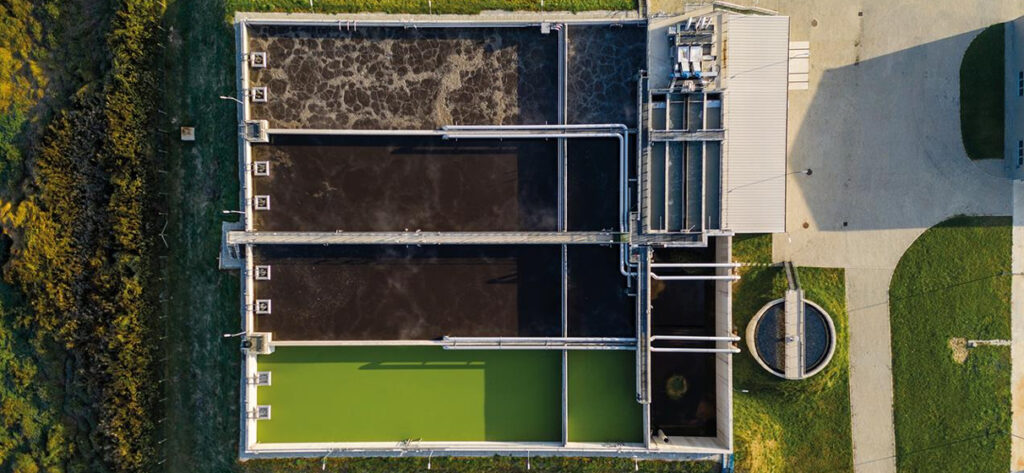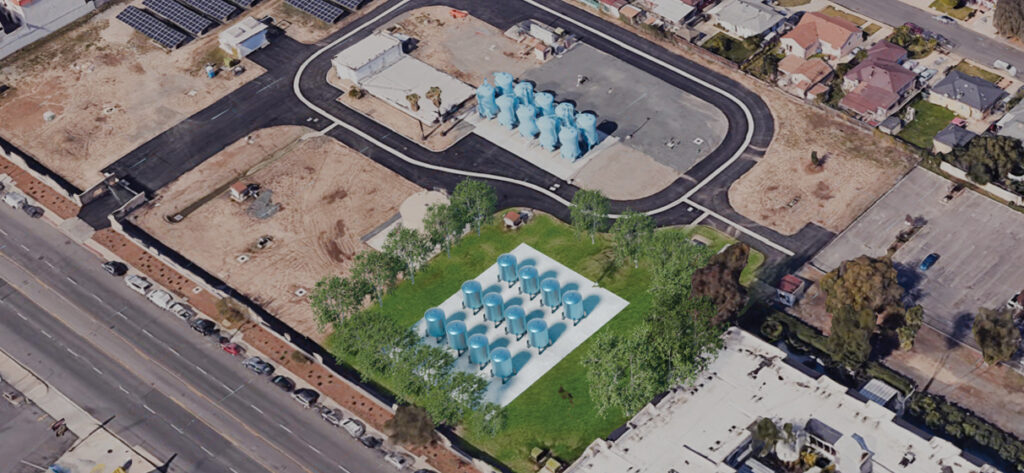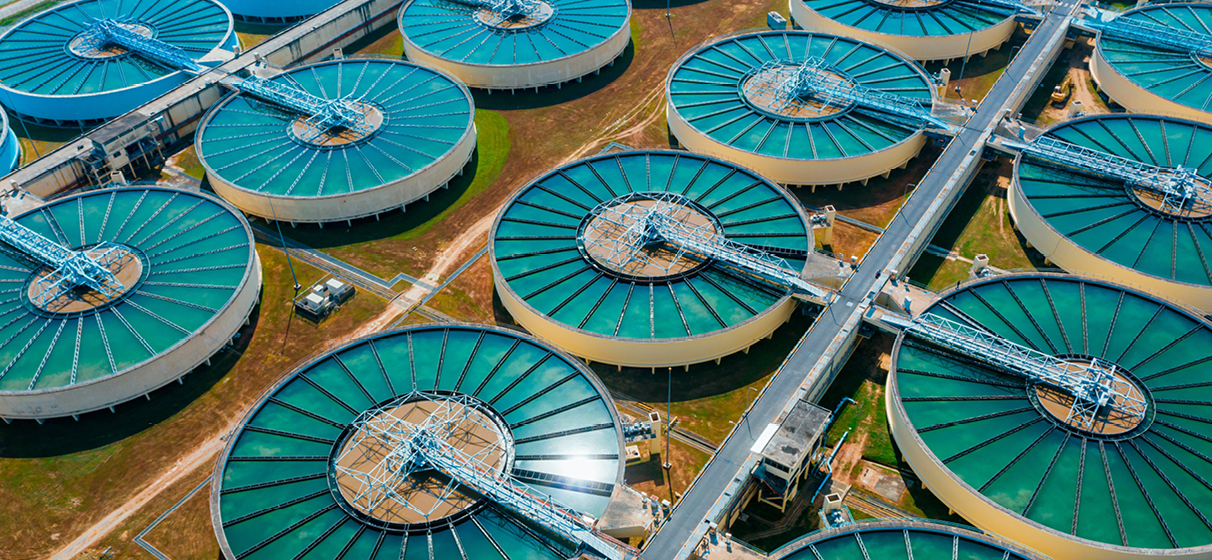The Environmental Protection Agency (EPA) recently announced that it would uphold the 2024 National Primary Drinking Water Regulation (NPDWR) standards for per- and polyfluoroalkyl substances (PFAS), a group of harmful chemicals found in the water cycle across the country.
This 2024 landmark rule set legally enforceable Maximum Contaminant Levels (MCLs) for these substances, aiming to reduce PFAS exposure in drinking water. Additionally, the regulations require water utility operators to complete initial PFAS monitoring and implement necessary treatment solutions in the coming years.
To comply with these standards, the road is complex and involves extensive testing, treatment planning, and infrastructure upgrades. Water providers face technical, regulatory, and communication challenges from bench-scale/pilot testing to full-scale treatment selection.
In a recent Water Online webinar, STV’s National Director of Water Quality and PFAS Solutions Swaroop Puchalapalli, PE, and Adam Tank, Co-Founder and CCO at Transcend, a leading provider of generative design software for critical infrastructure projects, shared insights into how utilities can navigate these complexities around PFAS compliance using data, technology, and strategic planning.
Where are we now with PFAS drinking water regulations, and what’s ahead?
Swaroop Puchalapalli: We’re in a critical window right now. The EPA finalized its National Primary Drinking Water Regulation (NPDWR) for six PFAS compounds in April 2024, marking a major regulatory milestone. These include extremely low Maximum Contaminant Levels (MCLs) – for example, 4.0 parts per trillion for PFOA and PFOS, and a hazard index calculation for mixtures.
The EPA also just announced in May of 2025 that it would uphold the MCLs outlined in the 2024 regulations while also stating that it intends to extend the initial 2029 compliance deadline for water systems to 2031.
This means water systems are currently in the monitoring and design phase. This period includes initial sampling, bench-scale studies, and early-stage planning. In the coming years, all systems that exceed the MCLs will be required to have full-scale treatment in place and operational.
How may the current administration impact PFAS regulations?
Swaroop Puchalapalli: Political dynamics will influence the compliance timeline for water operators. In addition to postponing the initial compliance deadline for water system, the EPA has also postponed the deadline for companies to report information about PFAS chemicals under the Toxic Substances Control Act (TSCA). Most companies now have until April 13, 2026, to submit their data. The delay gives the EPA time to develop better software for collecting and managing the data and to review public feedback on the reporting requirements.
The EPA has recently outlined some upcoming agency actions to further address PFAS. This includes the creation of effluent limitations guidelines (ELGs) for certain PFAS and initiatives to establish a clear liability framework that ensures that polluters would pay the bulk of fines for PFAS contamination and that passive receivers such as water utilities would be protected Overall, it seems as if this administration is loosening some restrictions while pursuing a path to ensure that polluters are held responsible for PFAS contamination and to reduce the burden on drinking water systems, especially in smaller or rural communities.
Overall, any significant rollbacks to PFAS levels that may arise from future legislative actions would take years to implement. In the meantime, our guidance is clear: utilities should continue moving forward with readiness – delays in planning will only create greater risk.
What about wastewater regulations and biosolids?
Swaroop Puchalapalli: This is where things get more complicated. Unlike drinking water, PFAS in wastewater and biosolids don’t yet have comprehensive federal regulation. Instead, the EPA has released guidance and has signaled that it will not set national enforceable standards for PFAS in wastewater, at least not in the immediate future. Instead, states are expected to develop their own policies, which creates a patchwork of compliance requirements across the country.
Since 2022, more than 20 states have enacted PFAS-related laws. Some, like Maine, Oklahoma and Michigan, have banned the land application of biosolids with detectable PFAS. Others, such as California and Minnesota, require extensive monitoring and reporting. Texas currently has two bills under consideration that would limit PFAS levels in biosolids.
For utilities, this means they must understand their state’s stance and prepare accordingly, especially around biosolids handling, source identification, and potential liabilities.

One thing is certain: biosolids and wastewater will continue to be a major area of regulatory development and public concern. Utilities must take proactive steps now – develop pretreatment programs, sample for PFAS sources and build a path toward long-term mitigation.
What are the treatment options for PFAS and how do utilities know what’s best?
Swaroop Puchalapalli: There are multiple treatment options available, but each comes with specific technical and operational challenges. Granular activated carbon (GAC) is widely used and can help remove a variety of PFAS compounds. Ion exchange (IX) has higher selectivity for certain PFAS and a smaller physical footprint but can be more expensive and complex. Reverse osmosis (RO) is also effective but has high capital and operational costs and creates a PFAS-concentrated waste stream that must be managed.
What we see often is utilities jumping to select a technology based on what’s worked elsewhere, but the reality is each system is different. The type of PFAS, background water chemistry, available land, hydraulic constraints, co-contaminants and even residual management all play a role in determining the right solution.
That’s why bench-scale and pilot testing are absolutely essential. It’s not just about meeting MCLs – it’s about selecting the option that integrates best with your existing system and provides sustainable, long-term performance.
Adam Tank: I’d also add that communication is key. Too many utilities wait until PFAS becomes a public issue before engaging with customers. Transparency from the beginning – sharing test results, design timelines, and treatment plans – can help prevent public backlash and foster trust. Let your community know: we found PFAS, we’re acting on it, and we’re committed to public health. That kind of messaging goes a long way.
How are technology companies such Transcend helping utilities make smarter infrastructure decisions?
Adam Tank: Transcend is all about accelerating smart infrastructure planning. Our platform takes inputs from utilities – things like source water characteristics, site conditions and treatment goals – and produces a complete engineering design package in a matter of minutes.
You’ll get a technical description, cost estimates, 3D visualizations and a range of metrics such as power consumption, system footprint, and operational needs. The data is exportable to REVIT, AutoCAD, and even project brochures – making it easy to use the outputs for everything from internal planning to public outreach.
We also allow side-by-side comparisons – like GAC vs. IX – so utilities can see not just which option works, but which works best in their unique context.

These visualizations and reports are powerful tools for stakeholder engagement. They help engineers, operators and community members understand what’s coming, how much it will cost and what it will look like. We’ve had clients use them in town halls, board meetings and funding applications. It’s design intelligence in real time and it saves months of effort.
What funding opportunities exist to support PFAS compliance?
Swaroop Puchalapalli: There’s a significant amount of money available for PFAS-related work – across every phase of the project lifecycle. The Bipartisan Infrastructure Law includes $9 billion specifically for PFAS and other emerging contaminants, with $21 billion overall earmarked for water infrastructure upgrades.
State agencies like the Texas Water Development Board (TWDB) offer additional funding through programs like SWIFT and the State Revolving Fund (SRF). WIFIA, the Water Infrastructure Finance and Innovation Act, is another excellent option – it’s a federal program with rolling applications that supports both drinking water and wastewater projects.
Importantly, funding isn’t just for construction. Many programs now allow reimbursement for planning, source identification and even pilot testing. But it’s a competitive landscape, so projects must be well-defined, timely and ranked highly to be considered.
What advice would you give to utilities still early in their PFAS planning?
Swaroop Puchalapalli: Start now. Don’t wait for the next regulatory update or for a funding opportunity to fall into your lap. Begin monitoring if you haven’t already. Invest in bench-scale testing and identify what’s feasible for your system. Proactively engage with your community and make PFAS planning part of your broader capital improvement strategy.
Adam Tank: Use the tools at your disposal. Technology can help utilities accelerate design, reduce risk and make more informed decisions. Whether it’s modeling PFAS treatment, assessing lifecycle costs, or generating public-facing visuals, platforms like Transcend can dramatically cut down the time and effort it takes to prepare.
Even if the regulations change, the need to act on PFAS isn’t going away. Systems that prepare early will be in the best position to adapt and succeed.







